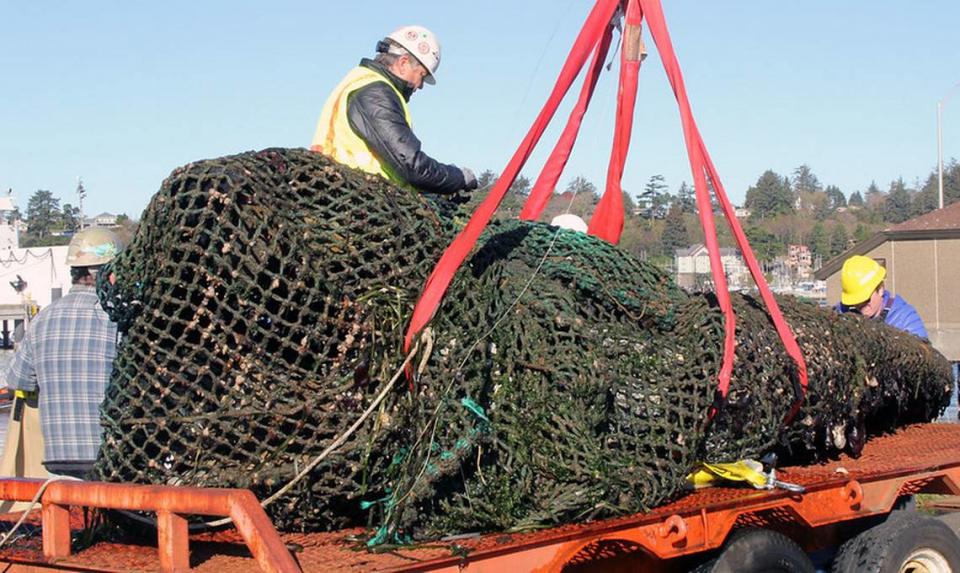Beached blue whale pulled from bay is Oregon’s first since Lewis and Clark, experts say
The submerged blue whale’s skeleton was huge: 78 feet long in all, with 18-foot-long jawbones and a skull that weighs 6,500 pounds on its own.
And on Thursday, divers hauled that enormous ocean mammal out of the waters of Yaquina Bay in Newport, Oregon, where it has rested on the seafloor for several years, according to a news release from Oregon State University’s Marine Mammal Institute.
“There are 365 bones in all. Some are small. Some, like the mandibles, are huge,” Bruce Mate, emeritus director of the Marine Mammal Institute, said in a statement alluding to the massive jawbones.
Blue whales — the largest mammal to ever live on earth — are found in every ocean but the Arctic and are listed as endangered under the Endangered Species Act, according to the National Oceanic and Atmospheric Administration. They can weigh more than 330,000 pounds and grow to 110 feet in length.
Experts said the Oregon carcass was hauled up in a daylong operation executed by Oregon Coast Aquarium divers and a crane crew on the dock.
But the work isn’t over: Now the bones will be taken to a warehouse for experts and volunteers to “begin the exhaustive process of cleaning them,” researchers said, adding that Mate is trying to find local volunteers to help with the process.
“We’ve got a bunch of work to do to get everything cleaned up,” Mate said. “It’s critical to get the oil out of the bones to help preserve the skeleton and keep it from becoming rancid.”
Humans’ selfies are disturbing extremely endangered seals, Instagram study reveals
When the dead whale washed ashore near Gold Beach in November 2015, it was a “very rare” event, according to Mate — so rare that “there hadn’t been a documented case of a blue whale beached in Oregon since Lewis and Clark made their historic journey to the coast more than 200 years ago,” the researchers said.
Mate said the explorers saw local Native Americans salvaging the beached animal for food.
Researchers dismantled and analyzed this blue whale after it washed ashore in 2015 (pulling off roughly 58 tons of flesh) and then wrapped it up in large nets and sunk it in the bay, “allowing nature to run its course by having scavengers clean the bones,” the news release said.
More than three years later — with funding from a $125,000 anonymous gift to Oregon State — the divers were able to start pulling up the bones from the water, researchers said.

“It is just a wonderful gift from someone whose generosity will benefit generations of Oregonians who they likely will never meet,” Mate said. “A blue whale skeleton is a marvel to behold — and now many, many people will have that opportunity because of this gift.”
The reassembled skeleton will eventually be on display at the Hatfield Marine Science Center, and Mate estimates the carcass will be ready in a year.

